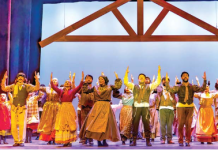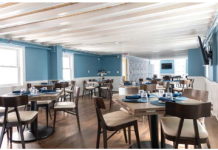By Linda McK Stewart
Photos by Alecia J. Cohen, Travel Exploration
In Morocco, through the wide French doors that open from my bedroom onto the stone balcony, floats a

single, reedy voice, borne on the chill night air. No need to check my watch. Without looking, I know it’s 4 a.m. First call to prayer. High above the tile roofs of Marrakech the Imam intones his pleas to Allah. In the pre-dawn dark the holy man’s voice rises and falls as, dreamlike, he slowly pivots atop the Koutoubia, Marrakech’s most beloved mosque, built by a pious Sultan in the 12th century. All across this lovely tile and terra cotta city, the faithful forsake their beds and kneel to face the east in prayer. Only the infidels, myself among them, wake, stir and sleep again.
For Americans Marrakech may seem situated on the far shores of exotica. But for travel-savvy Europeans it is the near-perfect choice for family holidays, a weekend getaway or, of course, the perfect honeymoon. The spirit that so vitalizes Marrakech was kindled 1,000 years ago when the city was the primary trading post for all of sub-Sahara. Then it was then that the local all-powerful Almoravid sultans invited the world’s greatest scholars, artists, scientist and artisans, assuring them royal protection from all manner of persecution. It was a golden era for Marrakech. Remnants of those glory days can still be glimpsed in the city’s Moorish palaces and mosques, its beautiful gardens and lavish sculpted monuments. The tradition of welcoming strangers into their midst is also said to be a direct legacy of those long ago days.
Marrakech sits at an elevation of 1,600 feet, which guarantees it a year-round mild, dry climate. In truth it is not one, but two cities…the old and the new. Avenue Mohammed V in the new city serves as Park Avenue, Wall Street and the Upper East Side all rolled into one. Need a stock market quote from London? A bank transfer of funds? A chartered jet? No problem. In this air-conditioned, sanitized, computer-savvy part of the city, everything is possible.

But only a saunter away is the throbbing, jumping, steaming plaza known as Djemaa el-Fna, Africa’s largest public square. Here life moves at a pace elsewhere long since forgotten. Just over there a fakir sits cross-legged, eyes closed, seducing by flute the hooded cobra that dips and weaves in dreamy compliance. Water venders in scarlet robes, festooned with brass cups, clank barefoot through the crowd. Incessantly they ring their bells, seeking out the camera-laden tourist who will gladly trade a dirham for a cup of water… plus a photograph. Too late he finds the water’s cheap but not that photograph. Ten dirham please! One half of humanity is hurrying through the plaza. The other half is simply hanging out. Gawkers, fortune tellers, magicians, jugglers, beggars, holy prophets, pickpockets, con-men, tour-hustlers, 10-year old would-be guides, veiled women in coveys…they’re all there. So too are the mimes, jugglers, musicians and ancients, asleep on their prayer rugs. It’s a rich, vibrant stew of humanity, steeped in the heady fragrances of roasting meat, turmeric, coffee, jasmine, mint and donkey dung.
Through the elaborately carved archway that is one side of the plaza is the souk, its semi-gloom offering

sweet relief from the sunlit plaza. Within its labyrinthine depths you can bargain for a certified antique carpet or a wig of human hair or a ceremonial saber in its emerald encrusted scabbard. You can buy a packet of herbs, guaranteed to revive your love life or assure the birth of a son. A daughter? The price doubles. For shoppers who shy at the prospect of lugging home a brass tray the size of as TV dish or a leather-covered hassock as big as a doghouse, there are always the stalls heaped high with Marrakech’s famous babouches. Slippers seems a pallid translation, though slippers they are. They come in every imaginable and unimaginable shapes and materials. Ostrich hide, hand-woven silk, tapestry, fur, satin, velvet, in lime green, electric yellow, sequined, embroidered, with tiny bells and without, with crocodile laces and without. They’re unique, squashable, laughably affordable and anyone would be forgiven for scooping up a dozen or more pairs.
Unique and not-to-missed, if only for a visit, is the world-famous Mamounia Hotel. It stands amidst 20 acres of gardens that were laid out 1,000 years ago. In recent years the entire hotel underwent a $45-million renovation. It serves the King of Morocco, Mohammed VI, as his personal guesthouse, so it was only fair that His Majesty covered most of the tab. The hotel has 179 rooms, numerous dining rooms and bars, pools, tennis, squash, a world-class spa, extensive gardens and an atmosphere that evokes both Montmartre of Paris and the Arabian Nights. It was Winston Churchill’s favorite holiday retreat. Roosevelt stayed there with him in 1943 during the wartime Casablanca Conference. To this day a non-stop parade of statesmen, royalty and luminaries from the arts comes and goes on a regular basis. Indeed, it is the perfect hub from which to take side trips to the nearby Atlas Mountains, to the Imperial Cities, to Morocco’s marvelous Moorish gardens. Multi-lingual Moroccan drivers who act as guides can be booked by the day or the week. Since road signs are spotty, mysterious detours are frequent and in many villages only Arabic or tribal dialects are spoken booking such driver/guides is highly advisable. And of course, for the ultimate Moroccan experience, nothing can top a Saharan safari by camel!
[nggallery id=28]
IF YOU GO:
For detailed advice about travel by camel or car as well as all hotel information, contact Travel Exploration Inc 917-703-2078.














